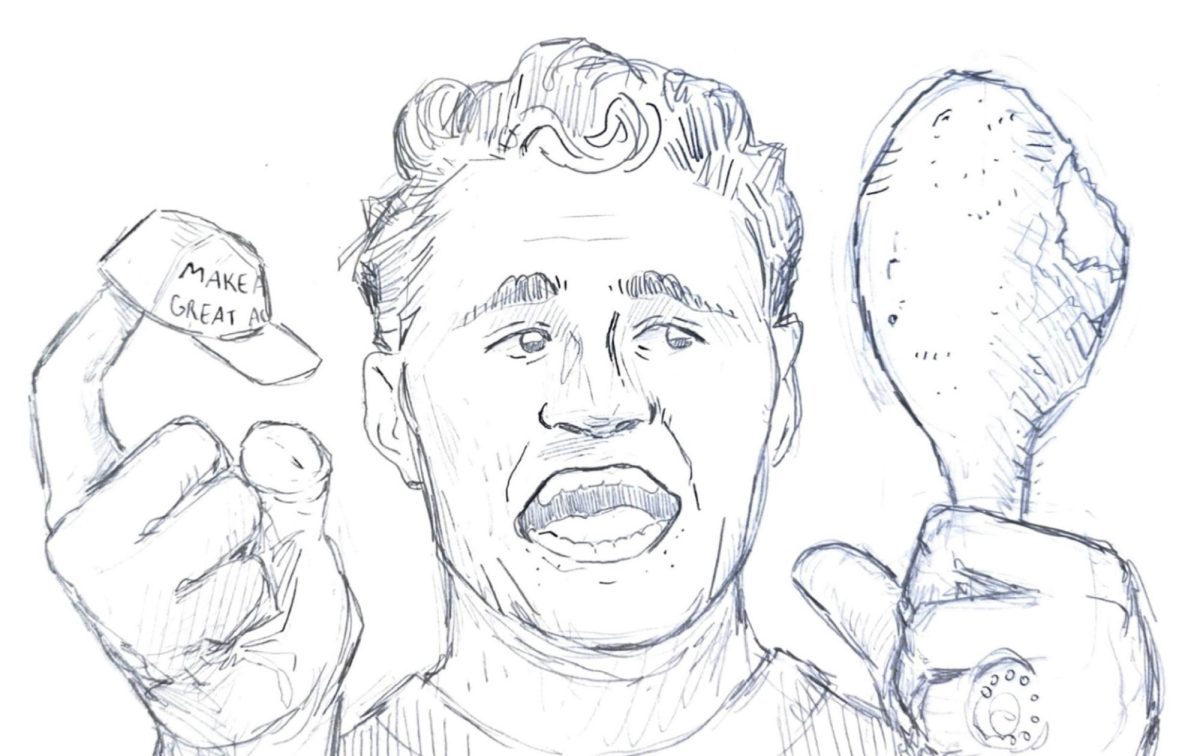A couple of weeks ago, on a Revelle TV show someone went too far. He crossed the line, vague as it may be, of being overly homophobic.
A friend of mine who was hosting the show received a call. The caller yelled homophobic insults into the phone about “”Mike,”” as we will refer to this friend of mine. The caller labeled Mike gay, for, of all things, crossing his legs while sitting down and wearing shorts. Not only was Mike’s fragile male ego greatly offended, but if affected me as well.
It sparked several questions in my mind: If Mike looks “”gay,”” what image has society constructed of the gay culture? Do we all look the same? What do gay men, for instance, look like? Do they cross their legs and wear shorts? Although college is supposed to be a place where people of all kinds can live harmoniously together, it still seems like this issue needs to be addressed.
I could probably guess most of the obvious stereotypes that straight people have of gays. These stereotypes would include: Gay men are feminine looking and great dressers; lesbians generally look masculine and could not dress themselves to save their lives.
The UCSD-supported pamphlet “”Straight Talk About Homosexuality”” recognizes the stereotypes “”effeminate man and masculine woman”” as existing, but disregards them as being generally false for much of the gay population.
I am not so sure of this. Most of the gay people I know relatively conform to these stereotypes. They do this either naturally or feel like they have to reconstruct themselves in order to fit in with their sexual orientation group.
There are exceptions to this rule of conforming to sexual orientation though. Actually, there is a whole spectrum of appearances for gays and lesbians. For men, it ranges from the raving queen to the Abercrombie, pretty-boy, masculine look to the ultra-masculine, often-bearded but always with a five o’clock shadow. For women there is the stereotypical butch dyke, to those who are androgynous, and then on to the “”lipstick”” lesbian, who is ultra-femme and can pass for straight easily. By just defining these categories, I am giving stereotypes myself.
Why do gays have to appear different than straight people? Some say it is for sexual survival. Human beings are naturally monogamous and inherently yearn for a significant other. Having distinguishing features such as short hair for lesbians and feminine qualities for guys can be a sexual invitation to the general public. In a society where gays are repressed, this is an easy and inconspicuous way of achieving such results. This behavior often attracts the types of people that gays are looking to be friends with, if not potential significant others. If one accepts such people despite their obvious nonconformity to society, one is probably a prospective friend for them.
Homosexuals have stereotypes of themselves as well. The other night I was in Hillcrest hanging out with friends when a lesbian couple walked by. One of my friends commented, “”Ah that’s sad, they look so straight.”” It made me angry inside to hear that from someone who I thought would be so understanding of other types of people.
It is ironic how the group that is discriminated against most discriminates against differences in its own kind. I feel that there is definite friction between different subcultures of each sex of the gay community. By fulfilling certain stereotypes such as cutting one’s hair or getting piercings, one is reaching for a fuller acceptance of the lesbian subculture. My guy friends tell me “”don’t give in, keep your longer hair and your femininity.”” In the next sentence, they’ll jokingly say “”so when are you gonna cut your hair?”” I understand that they are being sarcastic, but at the same time they are serious. I think they assume it is only a matter of time before I give in and chop my locks off.
As a concerned college student, I would like to question the stereotypes discussed in this article. Many students such as myself dislike these stereotypes and resent feeling peer pressure to conform to them. In doing what some consider rebelling against society, a lot of young people are actually reconstructing themselves to fit the social norm. With such actions, these stereotypes are ingrained deeper into our society and subsequently allow less room for individual thought and freedom.
For clarification, I am speaking to straight college students as well as queer ones. Straight college students want to conform to stereotypes just as much as gay ones do. Why shop at Abercrombie? Because you are trying to complete that look, the one everyone yearns for. Why cut your hair? It’s what all the other lesbians are doing.
Only by rejecting the stereotypes expected by society can college students create their own identities without fear of discrimination from the general public. By conforming to expected stereotypes we make discrimination possible. Sadly, targets of discrimination are usually those who distinguish themselves the most from the general population.
With this topic, another issue emerges: Where do you draw the line in terms of avoiding discrimination? Where do you stop sacrificing your individual freedom for the greater good? Personally, I am in favor of individual expression. Diversity is a beautiful thing; it’s what makes this world worth living in. But when a certain group of people typecast themselves through appearance, it makes it difficult for them not only to avoid discrimination, but it also causes more friction within their subculture toward those who do not model themselves as such.
In conclusion, I do not mean to alienate those who choose individual forms of expression for purposes of fulfilling their natural identity. But for those of you who socially construct yourselves to fit in, just remember, you do not have to. In saying this I do not mean to discourage diversity, but the opposite; I mean to encourage diversity and accordingly discard harmful stereotypes.







